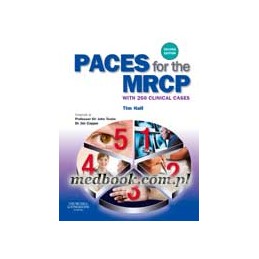- Reduced price

Order to parcel locker

easy pay


 Delivery policy
Delivery policy
Choose Paczkomat Inpost, Orlen Paczka, DHL, DPD or Poczta Polska. Click for more details
 Security policy
Security policy
Pay with a quick bank transfer, payment card or cash on delivery. Click for more details
 Return policy
Return policy
If you are a consumer, you can return the goods within 14 days. Click for more details
British Medical Association Book Awards 2009 - Highly Commended, Medicine
Clinical examinations in the OSCE style of marked stations are daunting for all students, whether undergraduates or MRCP candidates. The recent introduction of the 5-station PACES (Progressive Assessment of Clinical Examination Skills) exam inspired a great deal of apprehension, so the appearance of the first edition of Halls PACES for MRCP was greatly welcomed by candidates and became an immediate success. This new edition builds on the books reputation. It provides, in one colourful and attractive volume, complete coverage of all the most common medical cases that will be covered in PACES and similar exams. Although designed specifically for the PACES part of the MRCP exam, its in-depth coverage means that it can be used by any student preparing for clinical examinations in medicine.Data sheet
Reference: 57267
Author: Toshiharu Matsushima
